Java Implementation of a Bus Stop Display System: CMP5354 Project
VerifiedAdded on 2022/11/25
|9
|1084
|225
Project
AI Summary
This project focuses on the development of a bus stop display system using Java. The solution involves reading and processing data from CSV files containing bus route information, including bus numbers, source and destination stops, due times, and status updates. The code utilizes classes such as `BusStopDisplay`, `HasExpectedBuses`, and `Route` to manage and display the data. The system uses `FileReader` and `read()` functions to access the CSV files and `System.out.print` to display the results. An array list is used to store route information. The project also includes a UML diagram that outlines the system's classes, variables, methods, and data types. The output displays bus routes, departure times, and other relevant details. The provided code also includes methods to get and set the bus's calling routes, seat numbers, departure times, and speed values, which are converted to strings for display. The project's goal is to create a functional system that presents bus information in a clear and understandable manner. The assignment solution is available on Desklib.
1 out of 9
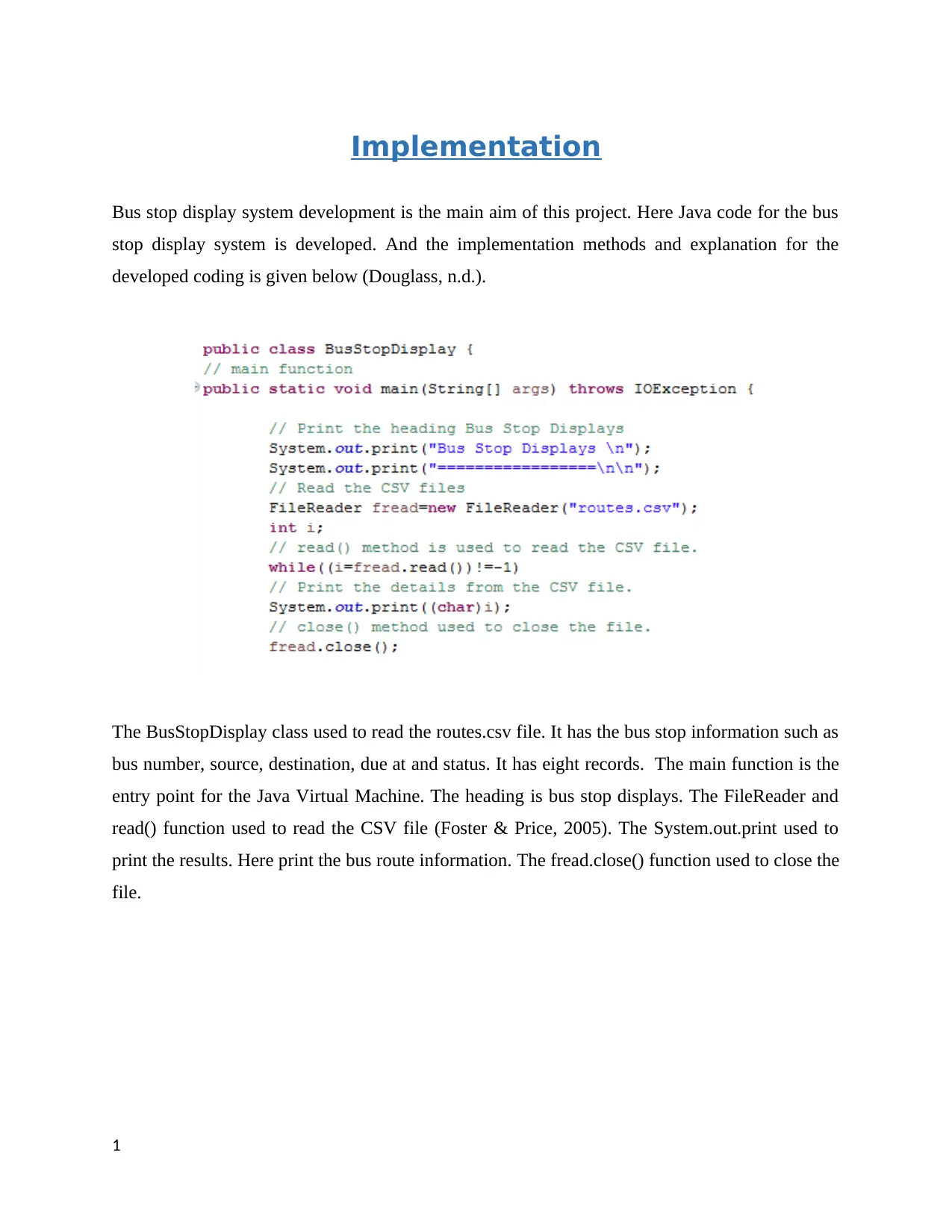
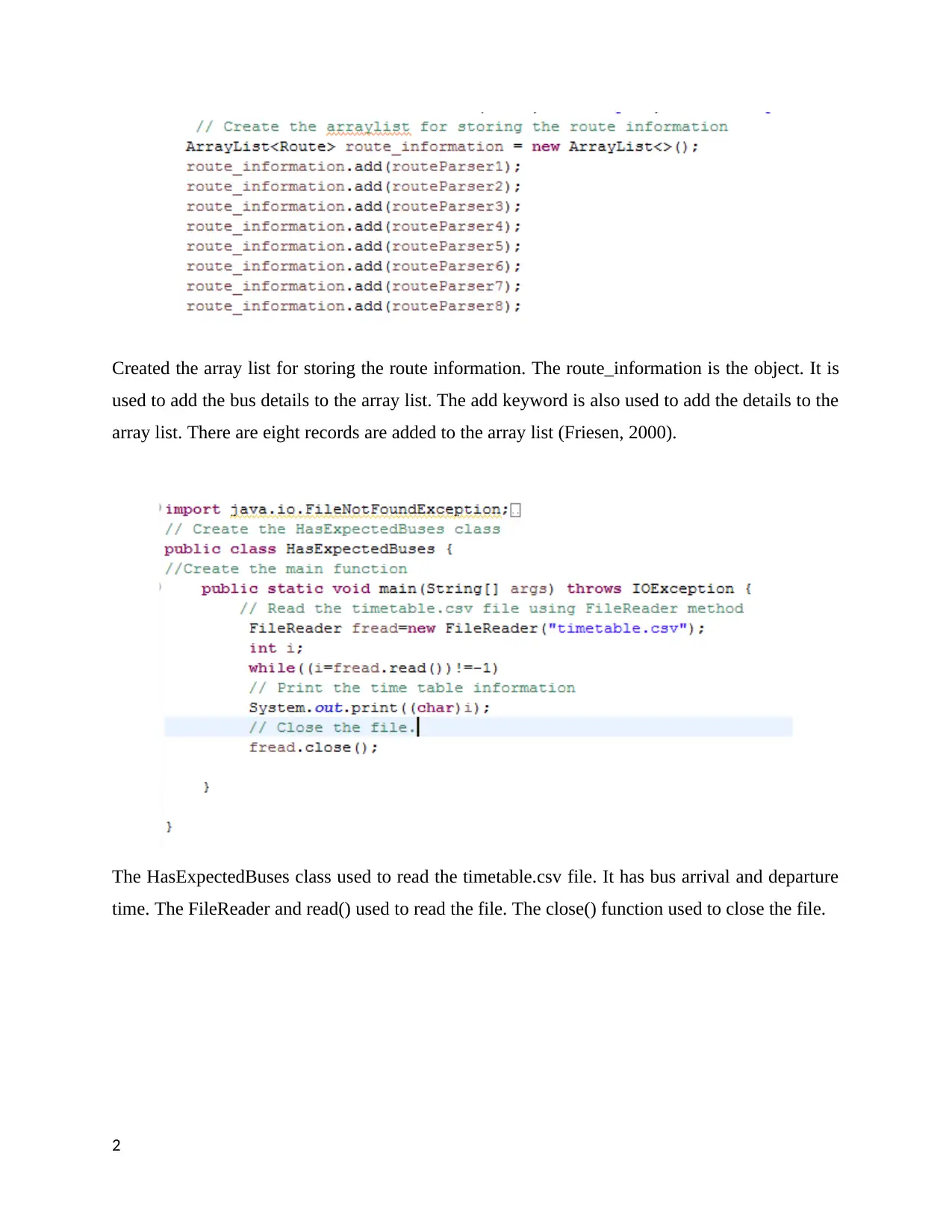
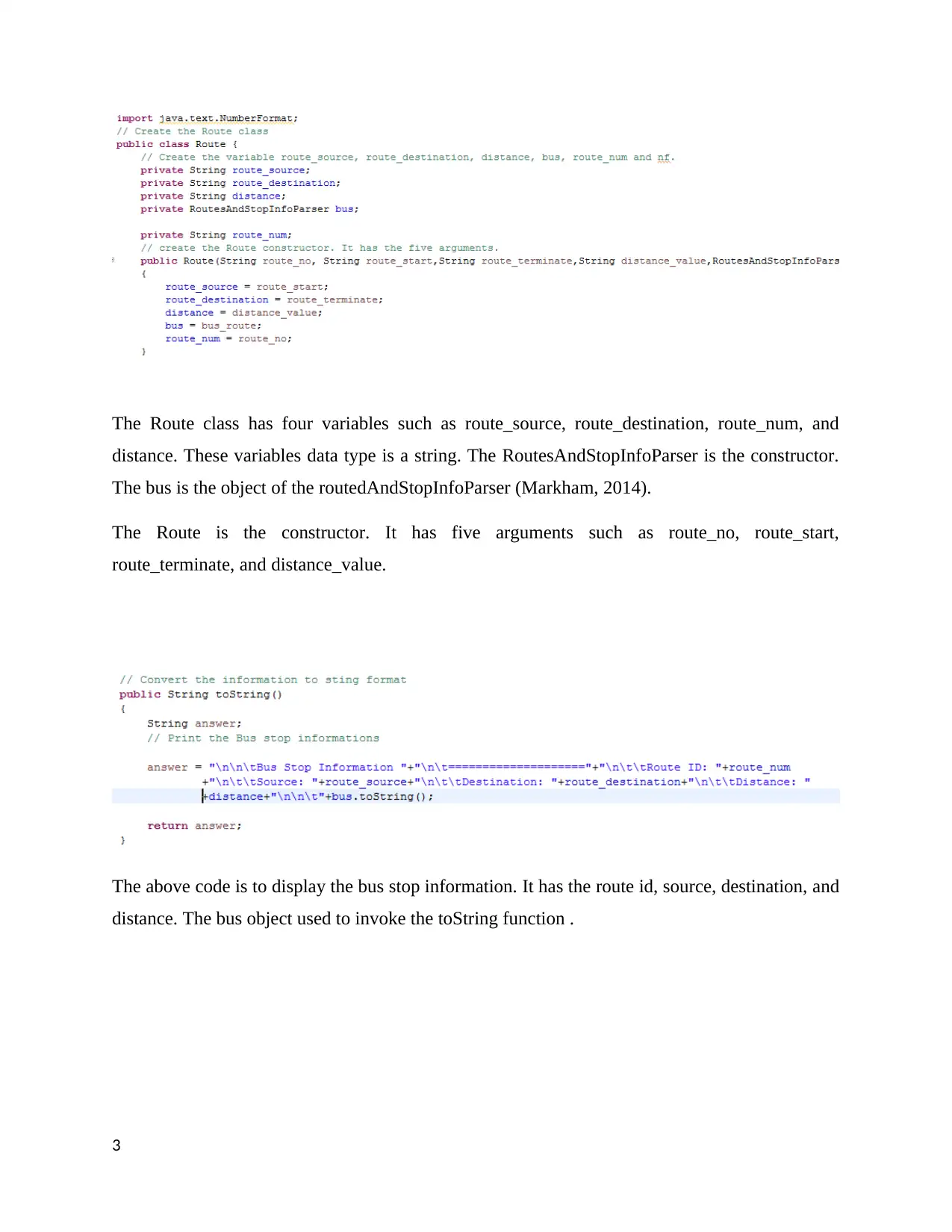

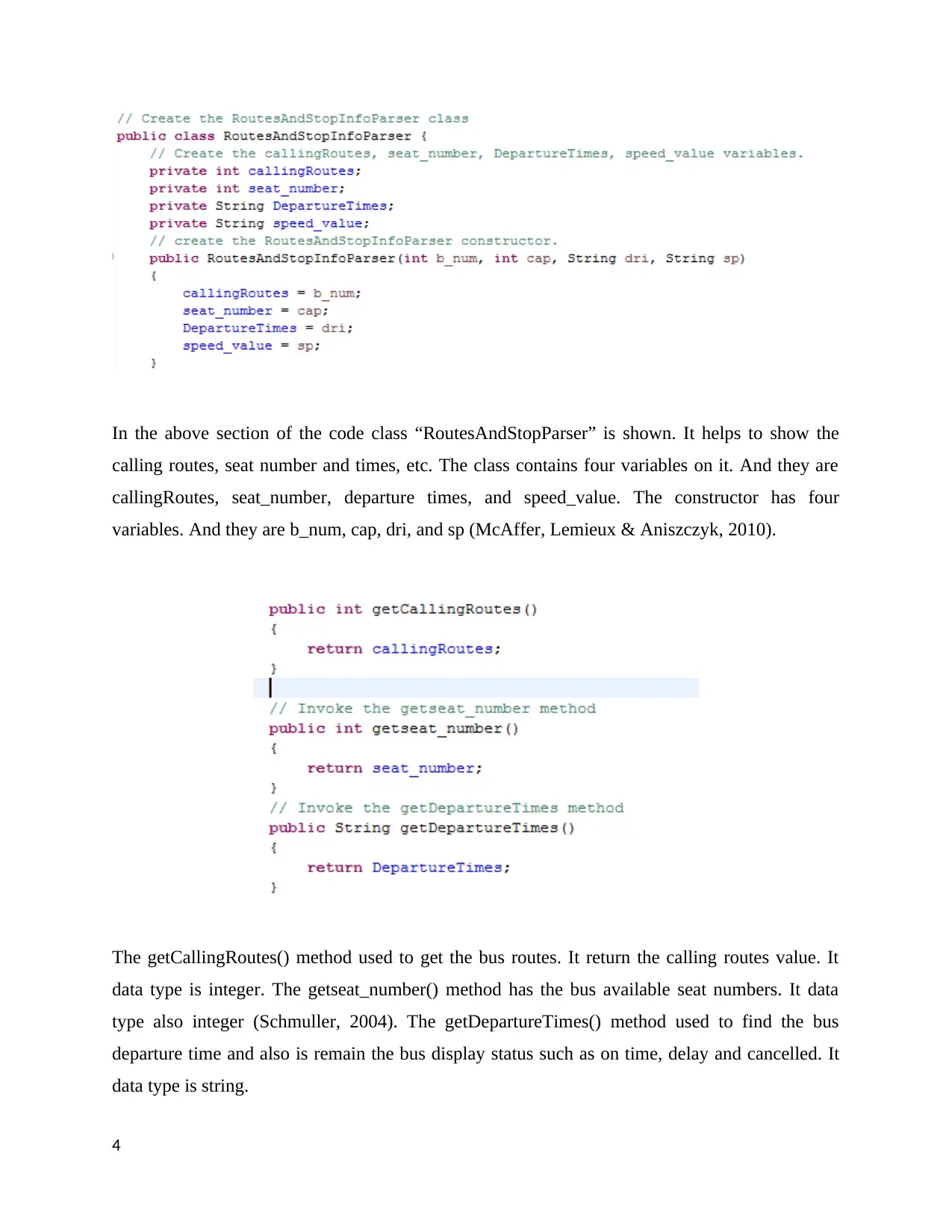
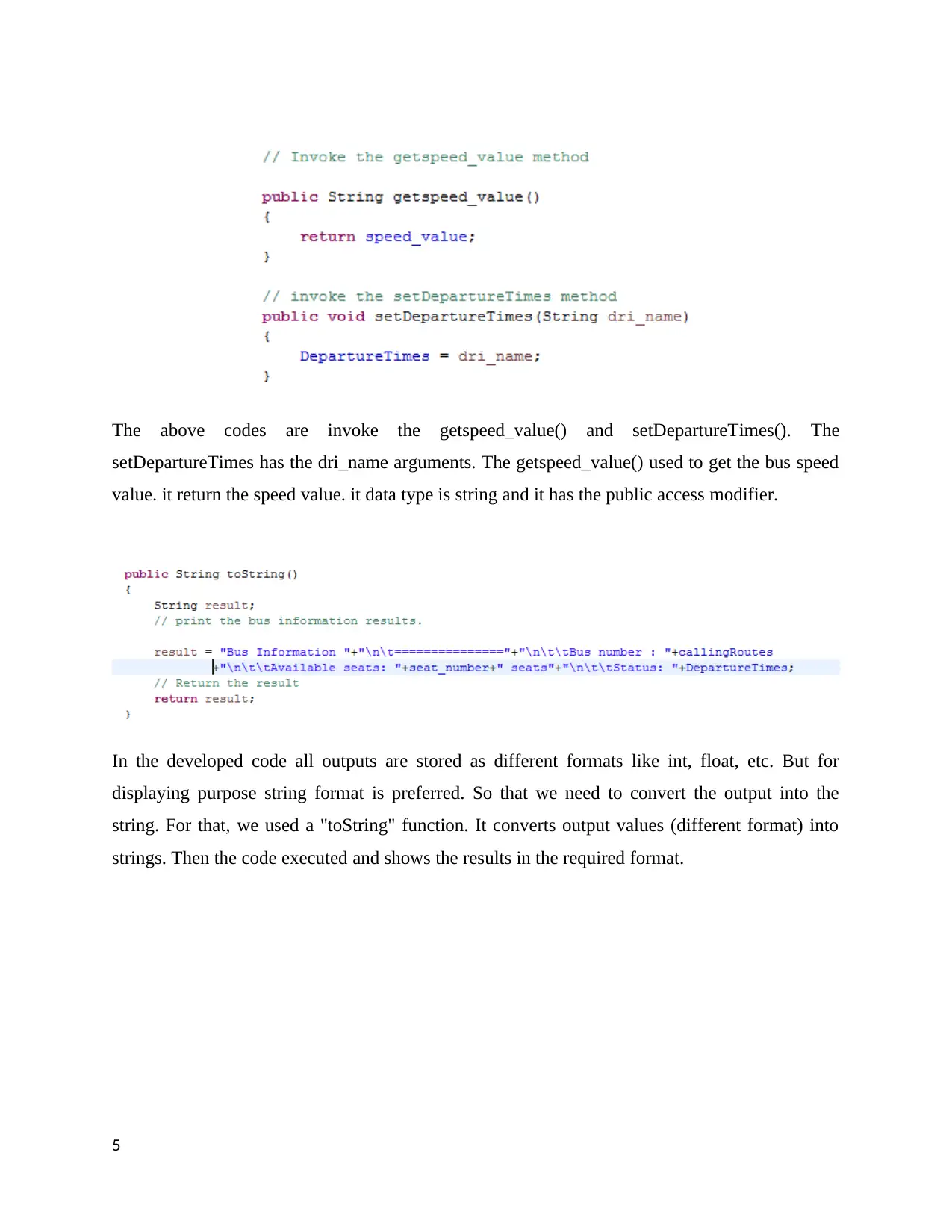
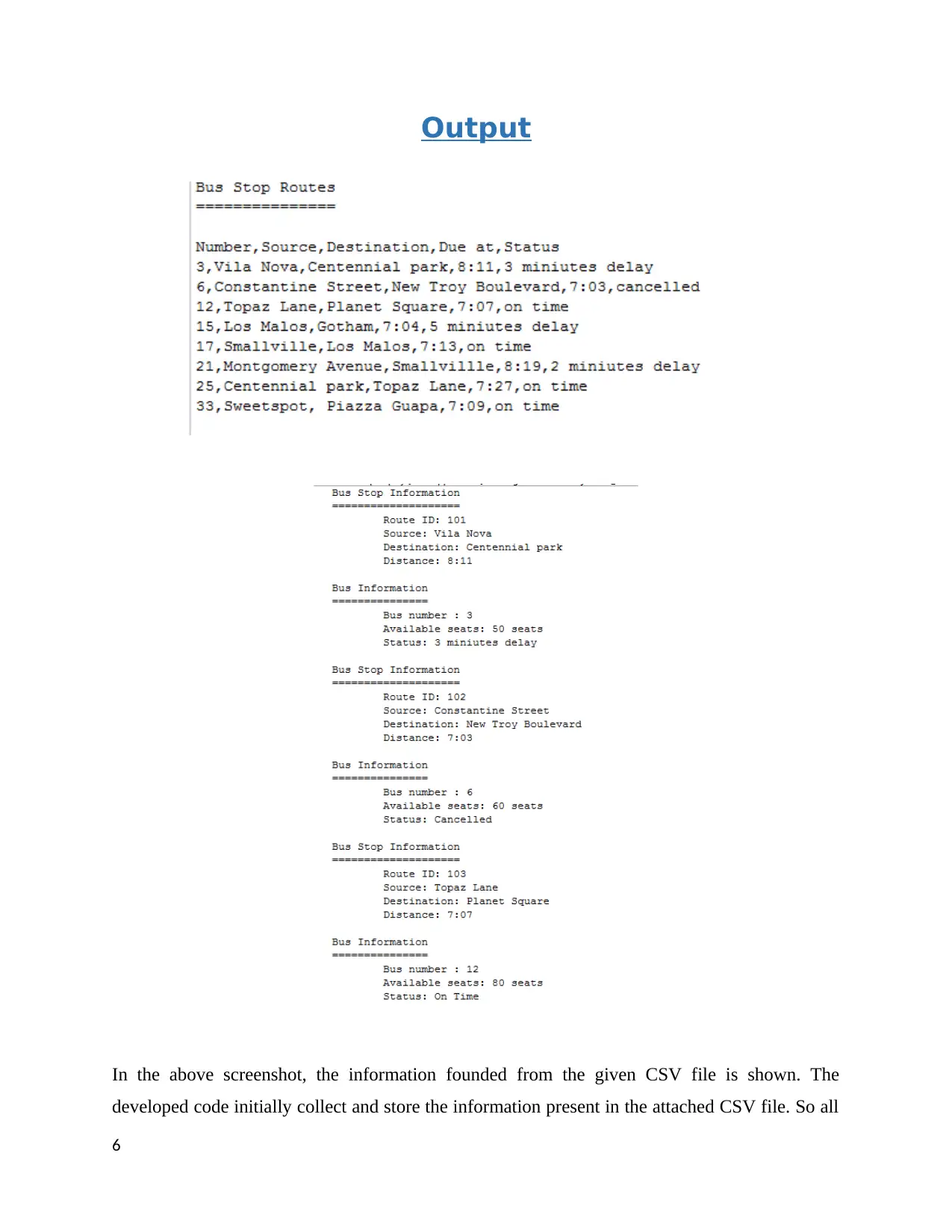
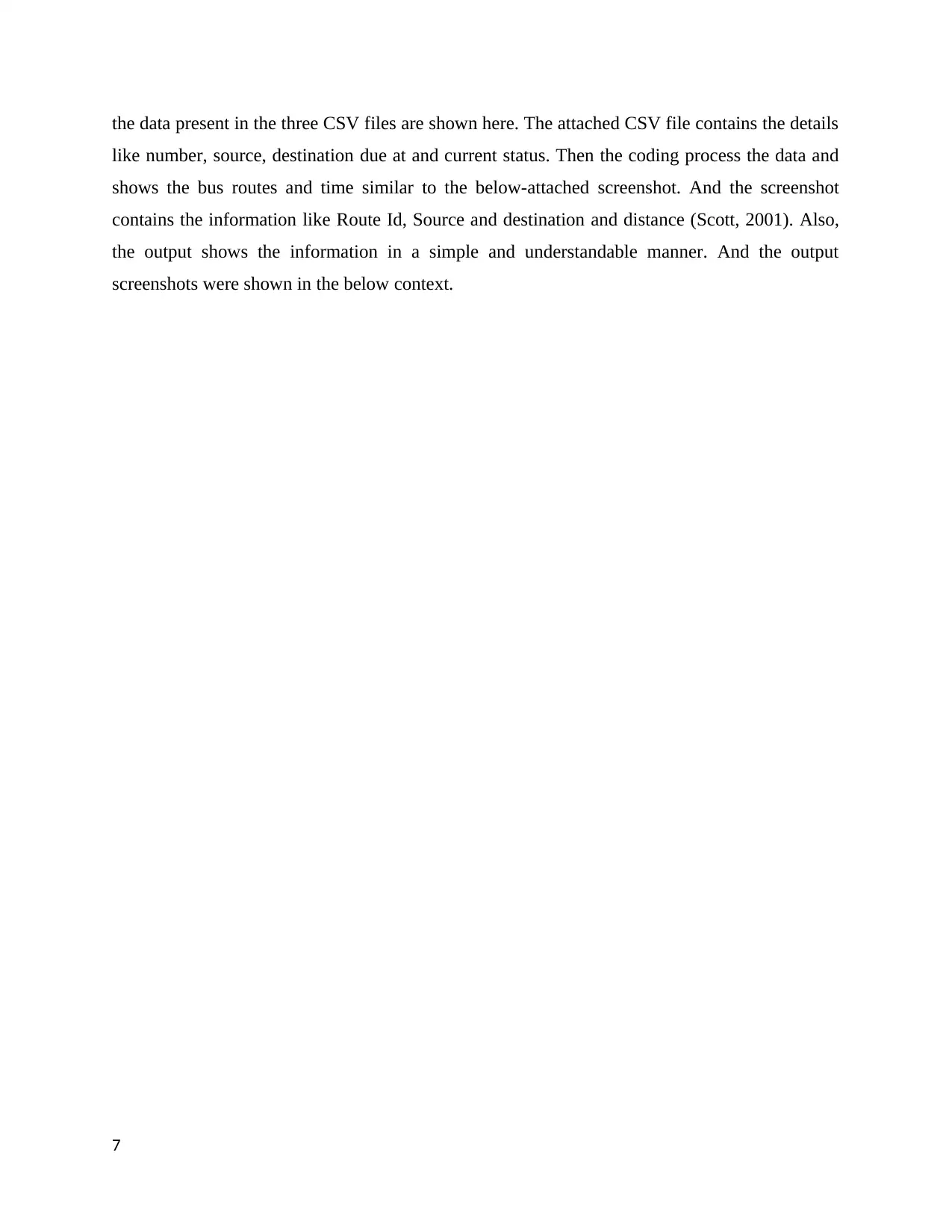
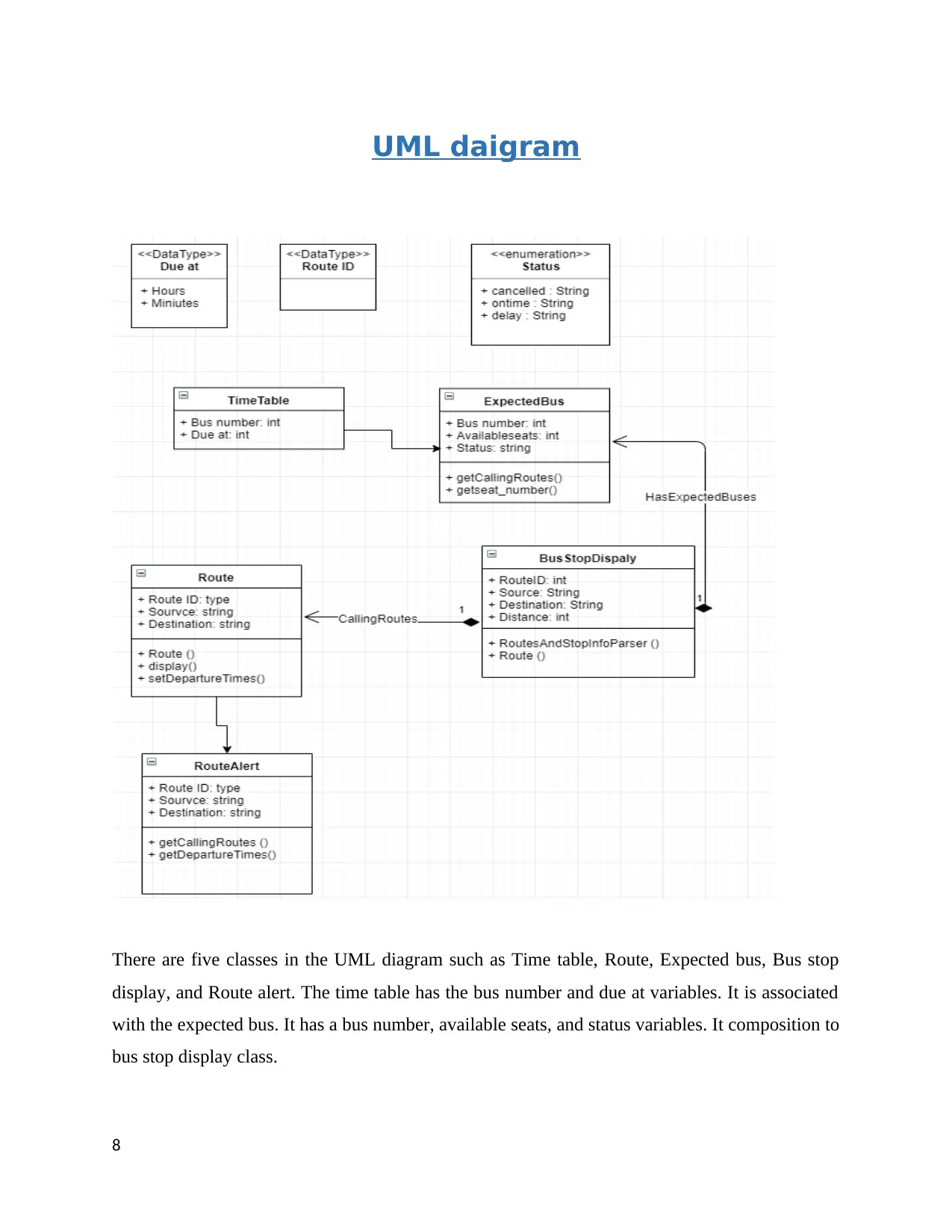
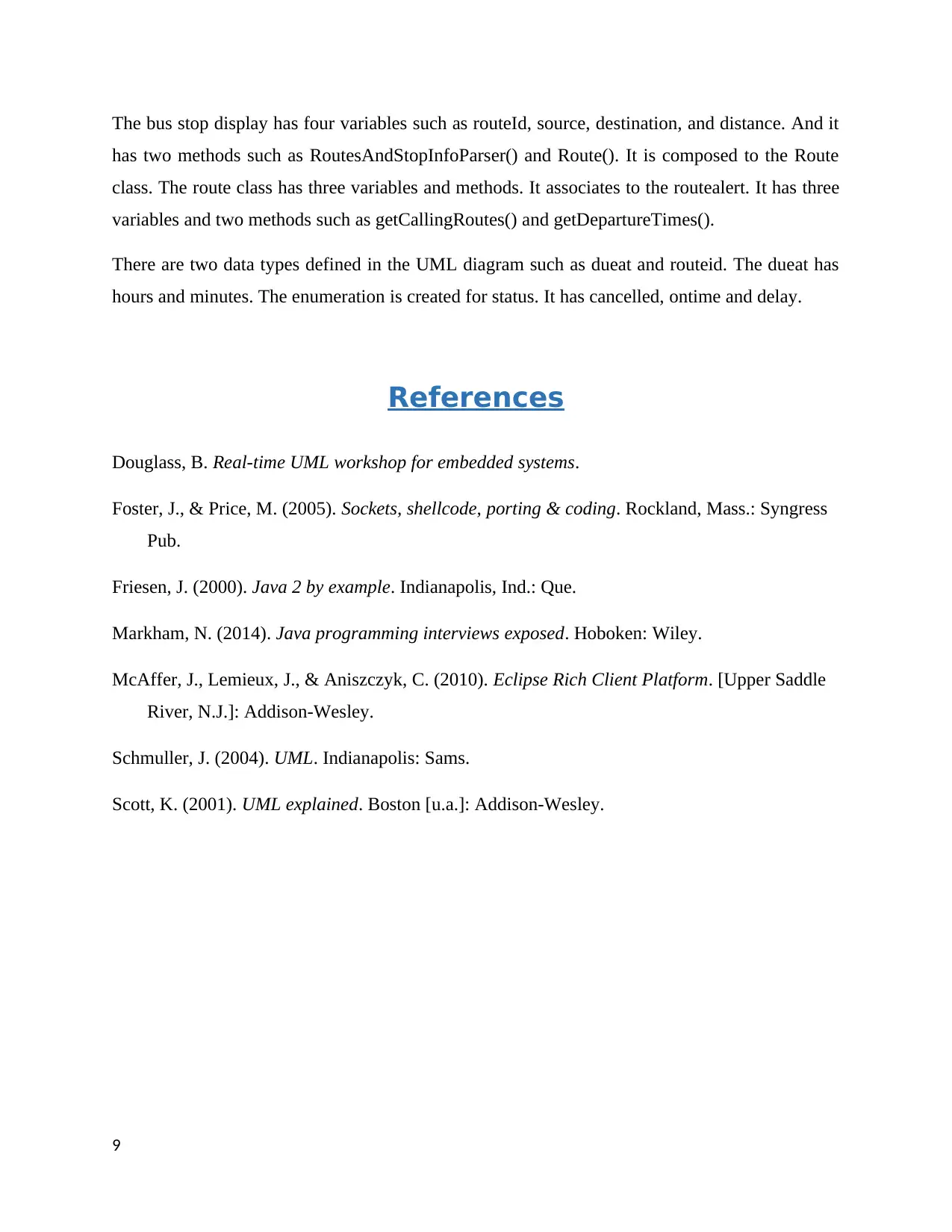






![[object Object]](/_next/static/media/star-bottom.7253800d.svg)